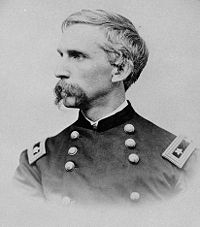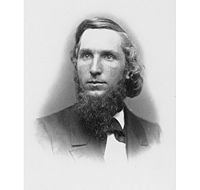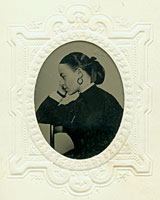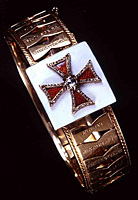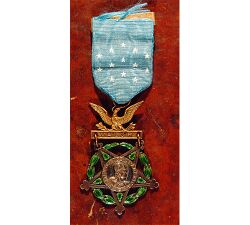Archive:New Draft of the Week: Difference between revisions
imported>Milton Beychok (Weekly change) |
imported>Milton Beychok m (Weekly change) |
||
| Line 20: | Line 20: | ||
|+Table of Nominees | |+Table of Nominees | ||
! Nominated article !! Vote<br/>Score !! Supporters !! Specialist supporters !! Date created | ! Nominated article !! Vote<br/>Score !! Supporters !! Specialist supporters !! Date created | ||
|- | |- | ||
| Line 70: | Line 63: | ||
| created = 2009-07-15 | | created = 2009-07-15 | ||
| score = 1 | | score = 1 | ||
}} | }} | ||
| Line 106: | Line 91: | ||
<div style="height:25em; overflow:auto; background:#f9f9f9; border:1px solid #aaa;"> | <div style="height:25em; overflow:auto; background:#f9f9f9; border:1px solid #aaa;"> | ||
((rpl|The Rolling Stones (Auguust 5) | |||
{{rpl|Euler angles}} (July 30) | {{rpl|Euler angles}} (July 30) | ||
{{rpl|Chester Nimitz}} (July 23) | {{rpl|Chester Nimitz}} (July 23) | ||
Revision as of 20:50, 12 August 2009
The New Draft of the Week is a chance to highlight a recently created Citizendium article that has just started down the road of becoming a Citizendium masterpiece.
It is chosen each week by vote in a manner similar to that of its sister project, the Article of the Week.
Add New Nominees Here
To add a new nominee or vote for an existing nominee, click edit for this section and follow the instructions
| Nominated article | Vote Score |
Supporters | Specialist supporters | Date created |
|---|---|---|---|---|
| 1 | Drew R. Smith | 2009-07-15 | ||
| 1 | Howard C. Berkowitz | 2009-08-12 |
If you want to see how these nominees will look on the CZ home page (if selected as a winner), scroll down a little bit.
Transclusion of the above nominees (to be done by an Administrator)
- Transclude each of the nominees in the above "Table of Nominee" as per the instructions at Template:Featured Article Candidate.
- Then add the transcluded article to the list in the next section below, using the {{Featured Article Candidate}} template.
View Current Transcluded Nominees (after they have been transcluded by an Administrator)
The next New Draft of the Week will be the article with the most votes at 1 AM UTC on Thursday, 13 August 2009. I did the honors this time. Milton Beychok 02:39, 6 August 2009 (UTC)
| Nominated article | Supporters | Specialist supporters | Dates | Score | ||||
|---|---|---|---|---|---|---|---|---|
The Dead Weather is a "a death-rattle blues quartet" formed in Nashville, Tennessee in 2009. Formed by Jack White of the White Stripes and the Raconteurs, the band is comprised of VV (Alison Mosshart) of the Kills, on guitar and vocals; Dean Fertita of Queens of the Stone Age, on guitar and organ; Little Jack (Jack Lawrence) of the Raconteurs and the Greenhornes, on bass; and Jack White on drums and vocals. The band was revealed, and performed for the first time, at the opening of Third Man Records' Nashville headquarters on March 11, 2009, immediately before releasing their debut single "Hang You from the Heavens". Band membersJack WhiteJack White formed the White Stripes in 1997, and they went on to have a string of critically acclaimed albums, with their third, White Blood Cells, catapulting them to international stardom. In 2005, White became a founding member of the rock band the Raconteurs. In 2009, he became a founding member of his third group, the Dead Weather. Jack White plays drums, and provides vocals for the Dead Weather. Alison Mosshart"VV" Alison Mosshart started her musical career in 1995 with the Florida punk rock outfit Discount, which disbanded in 2000. She then co-founded the Kills with British guitarist Jamie Hince in 2000. Alison Mosshart plays guitar and provides vocals for the Dead Weather. (Read more...) |
Drew R. Smith | 1
| ||||||
Joshua Lawrence Chamberlain, usually called "Lawrence", (1828-1914) was an American educator, who taught in a wide variety of fields, but was also an exceptionally distinguished citizen-soldier in the American Civil War. At Appomattox Court House, he was given the honor of accepting the Confederate flags, but did so, without orders, in a way that started healing for both sides. Especially in his home state of Maine, he is also remembered for his four terms as Governor. As governor, he made statewide contributions to education, but his most intense were as a faculty member and then President of Bowdoin College. PersonalityHe was an emotionally complex man, with a complex marriage. He was widely respected as a self-made war hero, a creative and beloved educator, and an elected official and political appointee without the right sort of personality for politics. Still, he served four terms as Governor of Maine. Of all his titles, however — Governor and academic President — he was proudest of General, and preferred to be addressed as such; he even sought foreign military service[1] It is complex to judge whether he had an unusual desire for recognition and honors. Compared to some Civil War leaders such as George Armstrong Custer, he could be called extremely modest, but he also, even when he thought he might be dying of his wounds, was aggressive in seeking promotion in rank. One biographer suggests that his desire to perpetuate his own image was equally a desire to perpetuate the spirit of the Union's army, and its patriotism and suffering. "As the story of his life is pursued, the impression grows that he thought of himself as more than himself."[2] Early lifeBrought up on his parents' farm, his father wanted him to join the military while his mother aimed him for the clergy. Since he chose to attend Bowdoin College, which, at the time, had a strong Congregationalist influence, perhaps his mother had the last word. Before attending Bowdoin, he had to meet a requirement of proficiency in the Greek language, so, already having learned French and Latin, he taught himself Greek and was accepted and started there in 1848. He was a respected general student, and also a musician, who taught voice, led choirs, and played the bass viola.[3] Preparing for marriageThey had first met as children, but, in his third year at Bowdoin, in 1851, he became seriously interested in Fannie Adams, adopted daughter of the respected minister of the First Parish Church, George Adams, who was her biological uncle. Joshua was 22, and a student who had not yet established a career, while the 25-year-old Fanny had a reputation as an exceptionally talented musician. She appeared, at first, puzzled by the intensity of his courtship. [4] George Adams and Joshua Chamberlain had quite different views of Fanny, and Adams did not, at first, consider Chamberlain a good match for his daughter. For example, Adams considered her too independent and thought her taste for expensive clothing was immodest. Chamberlain, however, was attracted to her wit, independence and intelligence. Few pictures of Fanny survive, but accounts describe her as much more strikingly attractive than the pictures, and a theme of romantic physicality was evident in their correspondence.[5] After his graduation, he enrolled in Bangor Theological Seminary, but stayed in contact with Fanny. At the seminary, his languages expanded to German, Arabic, Hebrew and Syriac. These studies were to prepare him for the Congregational ministry, which Fanny had already rejected. [6] Fannie was in an increasingly uncomfortable situation. Her adoptive mother had died, and, six months later, her father married Helen Root, who was only a few months older than Fannie. Fannie resented her father's short period of mourning, offering enough anger that Adams suggested she live elsewhere. Helen, like Fannie, delighted in her appearance, but what Adams considered extravagance on Fannie's part seemed charming to him in Helen. Some historians, such as Perry, believe Fanny was an early feminist, although one reviewer questions his research.[7] Even now, it is difficult to look into intimate relationships, and, at the time, such things were rarely spoken even among the participants. When Fannie realized she had to leave the house, without independent income, she decided to spend three years teaching in the south, a respectable quasi-missionary role at the time. She went to teach at the Milledgeville Academy in Georgia in December 1852. Chamberlain also worried that she was reexamining his relations with him. Perry wrote she confided fears of intimacy to Chamberlain, both in person and in correspondence during her three years of teaching: "asking him if he thought that 'it' — it is unclear if she meant childbirth or sexual union — and saying she thought it might be 'better' for the two of them to forgo any intimacy.[8] They married in December 1855. Bowdoin facultyHe joined the Bowdoin College faculty in 1856, first with a professorship in logic and natural theology, then adding rhetoric and oratory, and eventually professor of modern languages. Early in his career, he developed a distinct philosophy of education:
In spite of objections from her father, he married Fanny, starting a what was generally considered a lifelong love affair.[10] They had five children, two of whom survived into adulthood. Another historian, however, suggests their marriage may have had problems; [11] there clearly was a confrontation in 1868. American Civil WarVolunteering for service in 1862, he declined, initially, a regimental command. He became lieutenant colonel of the 20th Maine Regiment, taking command in May 1863, and was promoted to colonel on August 8. His brother Tom also served in the regiment, as a junior officer. He fought with the 20th at the Battles of Antietam, Shepherdstown Ford, Fredericksburg and Chancellorsville. He suffered his first wound at Fredericksburg. Little Round TopFor performance in combat, however, he is most remembered for the Battle of Gettysburg, and the Little Round Top engagement. Immediately prior to the battle, and after Chancellorsville, he received a detail of men who had contracted to fight only with the 2nd Maine, and whose enlistments had expired. He was sympathetic to their plight, writing about it to the Governor.[12] he faced the difficult command task of speaking to soldiers, Accused of mutiny, tThey were involuntarily assigned to the 20th. "Chamberlain's brief speech and his pledge to plead their case caused all but a handful to take arms and join the ranks of the 20th for the coming battle". At Little Round Top, the 20th held the end of the Union flank, in a desperate defense ending in an all-out bayonet charge against the 15th Alabama Regiment. Indeed, it was tactically critical; it has also become a legend in American military history; Chamberlain was to become a key character in Michael Shaara's historical novel The Killer Angels, the basis for a number of books, continued by Shaara's son, and for the Turner Broadcasting film and miniseries, in which he was played by Jeff Daniels. The character of his sergeant, Buster Kilrain, was fictional, but the Shaara material is highly regarded.
There have been some suggestions that one of his junior officers originally started the bayonet charge, but there is little question Chamberlain committed all his forces to it, and was wounded in combat. PetersburgIn November 1863 he was relieved from field service and sent to Washington suffering from malaria, the eventual cause of his death. He returned to the 20th, commanding it in the First Battle of Cold Harbor and the Battle of Petersburg, in which he was wounded; Ulysses S. Grant spot-promoted him to brigadier general, although he was expected to die. The wound suffered at Petersburg damaged his bladder and urethra. In surgery later called "miraculous" by a U.S. Army surgeon in 1997, two regimental surgeons went into his abdomen, almost a death sentence by infection in 1864, and repaired the damage.[14] The technology available for urethral repair was very limited, and he required repeated surgeries for what probably partially impaired his sexual function. Normally, this detail would be outside the scope of a historical article, but it may have been an contributing factor to tension with his wife while Governor. [15] Higher commandHe returned to brigade command in November, and fought in the Overland Campaign in the Battles of the Wilderness, Spotsylvania, North Anna and Second Petersburg. Wounded at the Rives' Salient engagement at Second Petersburg, he was again expected to die, and again spot-promoted by Grant, this time to major general. By the final days, he led a division. A time to healAt Appomattox Court House, he was given the honor, a sad one, of accepting the formal surrender of Confederate troops. As Confederate Gen. John Gordon's troops passed, Chamberlain, without orders, called his troops to attention and gave formal recognition to fellow soldiers, fellow citizens again. This was long remembered as a healing act, about which Chamberlain wrote in the lengthy Passing of the Armies.
While this gained him status on a national level, it was later to throw question on him when he later entered Republican politics in Maine. No one with secret sympathies for the South could be trusted by the Radical Republicans that controlled the Maine party.[17] An April 1865 letter to his wife, reflecting on the assassination of Abraham Lincoln, also reveals his affection for, and a very sensual image of her. [18] Postwar and politicsHe rode in the formal end-of-war review, ended his service in August 1865, although he was reactivated so he could receive surgery for his war wounds. While he returned to the Bowdoin faculty, he also began to lecture about the Civil War. In August 1865, Grant made a visit to the Bowdoin commencement and stayed at Chamberlain's home. The visit was one of a number by Grant, which suggested a campaign tour, but the obvious endorsement of Chamberlain by Grant suggested he could be a strong Republican candidate for governor. Grant had principally come, however, not to meet with Chamberlain, but with O.O. Howard, another retired general and head of the Freedmen's Bureau [19] Maine's Republican leader, James G. Blaine, first saw Chamberlain as a strong gubernatorial candidate: a popular war hero who rose by his abilities, and came from a part of Maine that most avoided regional dislikes. Blaine, however, did not know Chamberlain's political weaknesses: "He did not have the skill necessary to move easily and gracefully out of difficult or embarrassing situations. Although adept at self-promotion in many ways, he would later shrink from initiating and running a political campaign in his own behalf. He lacked the thick, protective, rhinoceros hide that a politician needs. And where matters of principle were concerned, he had little talent for compromise...he would speak and act according to his own beliefs."[20] Shortly afterward, their seven-month-old daughter died, the third child to die in infancy. For their tenth wedding anniversary on December 7, 1865, he gave her a bracelet that has become an artifact of American jewelers, centered about the insignia of the corps he commanded, with inscriptions of his battles and the shoulder boards of his rank. The marriage, however, was strained by the time he had spent away, the death of a child, and his continuing pain and restlessness from his wound. Chamberlain chose to run for Governor of Maine as a new adventure, without her agreement. [21] Well after the war, Congress explicitly voted him the Medal of Honor; it was not one of the questionable awards that did not meet the modern standards of the Pyramid of Honor. He was also governor of Maine, but his beloved Bowdoin College was first in his heart. The long wartime separation from Fanny introduced tensions into their marriage, exacerbated by the political career in which she had no role. On November 19, 1868, a member of his staff in the Governor's Mansion told him that Fanny was telling neighbors he was pulling her hair and striking her, and she was planning to sue for divorce. The next day, he wrote a manuscript letter in the Bowdoin collection talking not about the specific allegations but the situation. It appeared to lead to reconciliation three years later back at Bowdoin. [22] A friend suggested she was preparing for divorce, to which Chamberlain responded,[23]
Issues as governorAside from the partisan issues, Chamberlain was not on the popular side in several issues:
Additional politicsReturn to BowdoinHe preferred education to politics, and in 1871 became president of Bowdoin College. At a 2003 dedication of a memorial to him, the current college president, Barry Mills as "'thankless and wasteful'." Hardly the feelings of a man who felt appreciated, but also hardly the feelings of anyone assembled here today!" Bowdoin, a small but influential school, in Mills' words, "can trace much of its modern identity to the controversial Chamberlain presidency." Even though it was a competitor, Chamberlain was instrumental in forming the University of Maine. Back in office, he instituted controversial reforms. Perhaps based on his respect for Fannie's intellect, he was quite open to admitting women, and regretted Bowdoin did not currently have facilities for women. He did encourage an applicant in 1872. [24] Bowdoin eventually became coeducational, but he was less successful in introducing military drill as a means of enhancing spirit and discipline, as well as establishing a cadre of officers if needed. [25]
RetirementDuring her later years, Fanny, who had been an artist in her youth, became more isolated as she lost her sight. U.S. Army LegacyA descendant, Bill Chamberlain, commanded a U.S. Army battalion in the Gulf War in 1990. In its preparation for the assault, MG Barry McCaffrey had taken the senior commanders of the 24th Mechanizing through an exhausting 36 hour command post map exercise ("Map-Ex"), which left them knowing their plans perfectly. Still, it was tiring; told McCaffrey: "Sir, I just want to say I would rather be shot in combat than go through another Map-Ex." A fellow battalion commander agreed, "I, too, would rather see Bill shot than go through another Map-Ex." [27] In 1992, at the Command and General Staff College of the U.S. Army, lieutenant colonel Boyd M. Lewis wrote a new edition of the Army's Field Manual 22-100 : Military Leadership, and cited Chamberlain as an exemplar at both the tactical and strategic levels. The tactical described the Little Round Top action in terms relevant to contemporary officer training.
At the strategic level, "Joshua Chamberlain’s greatest contribution to our nation may have been not at Gettysburg or Petersburg, but at Appomattox. By that time a major general, Chamberlain was chosen to command the parade at which GEN Lee’s Army of Northern Virginia laid down its arms and colors. GEN Grant had directed a simple ceremony that recognized the Union victory without humiliating the Confederates. However, MG Chamberlain sensed the need for something even greater. Instead of gloating as the vanquished army passed, he directed his bugler to sound the commands for attention and present arms. His units came to attention and rendered a salute, following his order out of respect for their commander, certainly not out of sudden warmth for recent enemies. That act set the tone for reconciliation and reconstruction and marks a brilliant leader, brave in battle and respectful in peace, who knew when, where, and how to lead."[29] Unfortunately, Lewis died days after publication, so he could not be asked why he picked Chamberlain and George Patton. It suprises many that the two had many common traits, and surprises more that the two successful military leaders were so different in so many ways. [30] The tradition continues. A descendant, Dennis Chamberlain, was a first lieutenant in the Arizona National Guard in 2009. [31] References
|
Howard C. Berkowitz | 1
|
Current Winner (to be selected and implemented by an Administrator)
To change, click edit and follow the instructions, or see documentation at {{Featured Article}}.
| This article may be deleted soon. | |||||||||||||||||||||||||||||||||||||||||||||||||||||||||||||||||||
|---|---|---|---|---|---|---|---|---|---|---|---|---|---|---|---|---|---|---|---|---|---|---|---|---|---|---|---|---|---|---|---|---|---|---|---|---|---|---|---|---|---|---|---|---|---|---|---|---|---|---|---|---|---|---|---|---|---|---|---|---|---|---|---|---|---|---|---|
The Sporting Life (album)|The Sporting Life is an album by avant-garde singer Diamanda Galás and multi-instrumentalist John Paul Jones, released on 6 September 1994, on Mute Records. It is Galás' sixth studio album, produced by Jones. OverviewThe record was a notable shift in musical style from what was previously produced with Galás. The album's subject material incorporated various lyrical themes such as lust, revenge, violence, murder, betrayal, and death, mixed with sarcasm and dark humour. Galás' previous work centred around the theme of AIDS and subsequent deaths from it, after her brother and some of her friends succumbed to the disease.[1] This album was a change in direction, albeit a much more commercially accessible one, with the additional input of former Led Zeppelin bass player and keyboardist John Paul Jones on songwriting, performance and production duties. Jones was working on a live project with Heart (band)|Heart at the time of this collaboration. When interviewed about his involvement Jones explained:
Jones had previously been introduced to Galás' body of work in 1983 via his wife Maureen, who brought home and played a 1982 compact disc containing 'Wild Women with Steak Knives (The Homicidal Love Song for Solo Scream)'.[3] Galás intimated in an interview with online magazine Convulsion that she wanted to explore other facets of life outside of the AIDS epidemic, such as 'sick relationships.'[4] The 'sporting life' is street hustler slang for the place where affection is a commodity, where the only love that's not for sale is obsessive and destructive love.[5] Writing and compositionAfter an initial evening meeting in London where they both agreed to work together, the album was composed both in New York (disambiguation)|New York (Galás) and in England (Jones). Demo tapes were exchanged, with Jones providing compositional ideas on an 8 string bass, while Galás added organ and lyrics to them. This continued until they were both satisfied with the material and a rehearsal arranged.[6] The recording process took three weeks in London, in which Thomas laid down drum tracks in the third and final week. With mixing, the entire project took two months in total.[7] Galás described the project as a collection of homicidal love songs:
On the recording, Galás utilises both Hammond B3 organ and piano. The drummer used for the album was Pete Thomas, from Elvis Costello's backing band the Attractions. Due to his commitments with The Attractions, former Heart drummer Denny Fongheiser performed in place of Thomas for subsequent live appearances.[9] Galás has a 3½ octave vocal range which she uses to full effect on the album. Jones commented that 'With a voice like Diamanda's, a guitar would simply be a cosmetic device.'[10] The album opens with 'Skótoseme' which is Greek for 'kill me', on which Galás meshes her frantic, operatic voice with Jones' funky bass lines. A merging of heavy rock and Ancient Greek tragedy. The song 'Do You Take This Man?' mocks wedding vows by comparing romance to imprisonment, where the only solution is submission. Galás' haunting cover of Percy Sledge's soul classic 'Dark End of the Street,' reminds lovers that death is not far away. The title track 'The Sporting Life' meanwhile, tells the tale of a group of prostitutes who stalk and kill a man for fun. Death laments melt into Hammond-driven Cajun dance music on 'You're Mine'. 'Last Man Down', is a wailing blues drenched song about isolation and despair, with lap steel guitar embellishment. Release and critical receptionImage:Thesportinglifepromo.jpg|thumb|200px|right|A screenshot from the music video, depicting Diamanda Galás and John Paul Jones. Alternate cover picture outtakes with Galás and Jones in a convertible, with Jones driving, appeared in a 1994 issue of Musician (magazine)|Musician magazine. One of these images was used for the CD single cover of 'Do You Take This Man?' A video was filmed for the single and was completed on 29 July 1994, with director Jon Reiss. It featured Galás in various scenes throughout New York, with Jones playing an eight string bass guitar, and released on 22 August 1994 prior to the album launch. Jones also used 4, 5, and 6 string basses plus a lap steel guitar, while the pair toured throughout October 1994 - January 1995 to promote the album, with concerts billed as 'An Evening of Homicidal Love Songs.'[11] This was Jones' first full tour since Led Zeppelin's 1980 Tour Over Europe 1980|Over Europe tour.[12] The album was released to mixed reviews. Entertainment Weekly offered the most positive with a B+ rating: '... Led Zeppelin bassist Jones and Pete Thomas join the demonic diva to form a power-mad trio on Galas' most rocking album yet ...'[13] while Musician magazine went further: '... At times, The Sporting Life sounds like the best album Led Zeppelin never made, with Galas' acrobatic, banshee-giving-birth caterwaul subbing for Jimmy Page feedback in a newfangled power trio ...'[14] Bomb (magazine)|Bomb arts magazine described it as: '... An expanse where divisions between what is electronic and what is "natural" smear, where the instrument is only as good as its ability to scalp you ...' [15] Track list
Chart positionsAlbum
Singles
Credits
Notes
Previous Winners((rpl|The Rolling Stones (Auguust 5)
Rules and ProcedureRules
NominationSee above section "Add New Nominees Here". Voting
Ranking
Updating
AdministratorsThe Administrators of this program are the same as the admins for CZ:Article of the Week. ReferencesSee Also
|
|||||||||||||||||||||||||||||||||||||||||||||||||||||||||||||||||||

